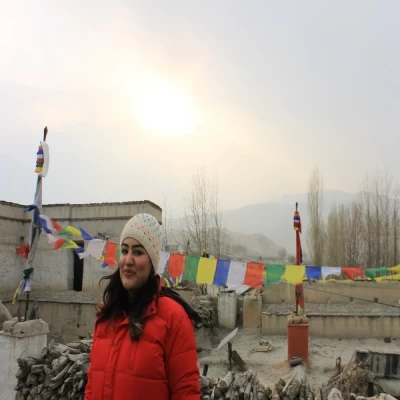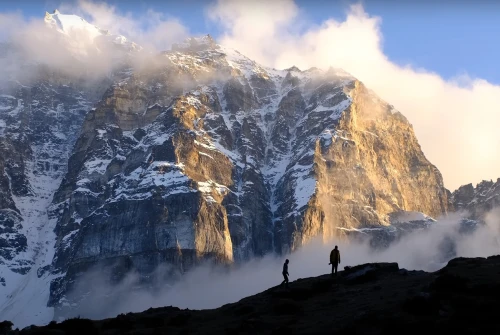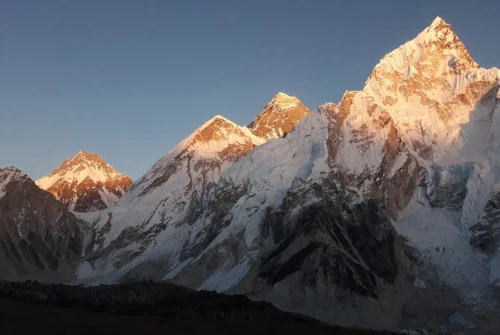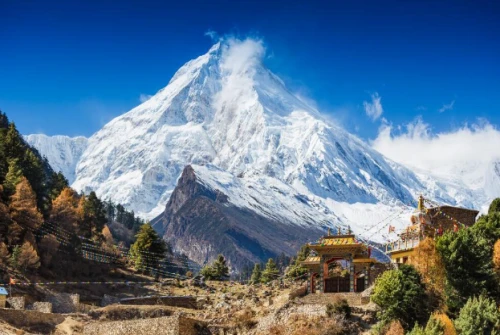Introduction
Nepal is a trekker’s paradise, boasting some of the world’s most breathtaking mountain trails. Two of its most iconic routes, the Annapurna Circuit and the Manaslu Circuit, are often compared by adventure seekers trying to choose the right journey.
Though both treks offer jaw-dropping mountain vistas, cultural richness, and a touch of Himalayan mystique, they differ in terrain, difficulty, remoteness, and overall experience. This article breaks down the differences to help you decide which trek best suits your needs, spirit, and level of adventure.
Annapurna Circuit Trek – Overview
The Annapurna Circuit is one of Nepal’s most popular and celebrated trekking routes, circling the Annapurna Massif and stretching through multiple climatic zones. The trek begins in lush subtropical forests and ascends to alpine and high-altitude deserts. Along the way, trekkers cross the dramatic Thorong La Pass (5,416 meters), one of the highest trekking passes in the world.
The trail is well-developed, lined with numerous teahouses, villages, and cultural landmarks. As it winds through districts like Manang and Mustang, trekkers are treated to diverse ethnic encounters, from Gurung and Thakali to Tibetan Buddhist influences.
Manaslu Circuit Trek – Overview
Manaslu Circuit Trek offers a raw, less-traveled experience around the eighth-highest mountain in the world, Mt. Manaslu (8,163 meters). Officially opened to tourists in 1991, it remains a restricted area that requires special permits and a licensed guide. The trail circles the majestic Manaslu and culminates at the Larke La Pass (5,106 meters).
Unlike Annapurna, Manaslu retains its untouched charm, with fewer trekkers and more authentic village life. Tibetan Buddhist culture dominates the area, with centuries-old monasteries and mani walls dotting the route. This trek is ideal for those looking for solitude, wilderness, and a deeper cultural immersion.
Trekking Distance and Duration
The Annapurna Circuit covers a flexible route ranging between 160 to 230 kilometers, depending on where you start and end your trek. It usually takes 12 to 20 days to complete, offering trekkers the ability to adjust their pace.
In contrast, the Manaslu Circuit spans about 177 kilometers and typically requires 14 to 18 days. Despite being slightly shorter, Manaslu’s rugged and remote nature makes the trek duration comparable. Both treks demand a decent fitness level and acclimatization to the high-altitude terrain.
Trek Difficulty and Altitude
Annapurna Circuit is moderately difficult, mainly due to the long duration and the high Thorong La Pass. It offers a good balance of challenge and comfort, with gradual altitude gain and multiple acclimatization points.
Manaslu Circuit, on the other hand, is more challenging because of its rougher trails, isolation, and minimal infrastructure. Larke La Pass, although slightly lower than Thorong La, comes after days of walking through remote terrain with few modern comforts. The steep ascents and descents on narrow mountain paths add to the difficulty, making it more suitable for experienced trekkers.
Permits and Regulations
For the Annapurna Circuit, you need two main permits: the Annapurna Conservation Area Permit (ACAP) and the Trekkers' Information Management System (TIMS) card. These are relatively easy to obtain and inexpensive.
Manaslu Circuit requires more documentation, including the Manaslu Restricted Area Permit (RAP), the Manaslu Conservation Area Permit (MCAP), and the Annapurna Conservation Area Permit (ACAP). RAP must be obtained through a registered trekking agency, and you must be accompanied by a licensed guide and at least one other trekker. The stricter regulations reflect the region’s sensitivity and help preserve its untouched nature.
Best Time to Trek
Both treks are best done in the spring (March to May) and autumn (September to November). During these months, the skies are clear, the views are incredible, and the weather is stable. Annapurna Circuit, due to its more developed nature, can be attempted in late winter or early monsoon as well, though risks like snow and landslides remain. Manaslu, being more rugged and remote, is best avoided during off-season months due to accessibility issues and harsh weather conditions.
Scenery and Landscapes
Annapurna Circuit boasts varied and dynamic landscapes, from lush green hills and terraced farms to the windswept deserts of Mustang. Trekkers pass cascading waterfalls, rhododendron forests, and glacial rivers, witnessing changing ecosystems within a single trek.
Manaslu Circuit, however, offers raw Himalayan beauty, untouched forests, wild rivers, deep gorges, and panoramic mountain views with a more isolated, wild vibe. If you’re chasing a National Geographic-style trek, Manaslu delivers it in full.
Cultural Experience
In Annapurna, cultural diversity is one of the trek’s highlights. You’ll encounter Hindu, Buddhist, and animist traditions, and engage with Gurung, Thakali, and Tibetan-influenced communities. Festivals, monasteries, and unique architecture add depth to your journey.
Manaslu Circuit provides a more uniform but deeply immersive cultural experience, with Tibetan Buddhist traditions prevailing. From ancient gompas to chants of monks, the cultural authenticity here is profound and spiritually enriching.
Crowd and Popularity
The Annapurna Circuit is among Nepal’s most popular treks and sees thousands of trekkers annually. It can get quite busy, especially in peak seasons. While this means more facilities and social interactions, it might detract from the solitude some trekkers seek.
In contrast, Manaslu Circuit receives far fewer visitors due to its restricted status and challenging nature. If you crave peace, unspoiled trails, and minimal crowding, Manaslu is the better choice.
Accessibility and Logistics
Annapurna Circuit is highly accessible, with good roads leading to popular starting points like Besisahar or Jagat. Public buses and jeeps make it easy to reach and depart the trek.
Manaslu Circuit begins from Soti Khola or Machha Khola, requiring a longer, bumpier jeep ride from Kathmandu. Due to its remoteness, logistics for Manaslu are more complicated, with fewer transportation options and a higher dependency on guides and porters.
Accommodation and Food
Annapurna offers a wide range of teahouses and lodges with diverse menus, including international options like pasta, pizza, and pancakes. Rooms usually have basic amenities like electricity, Wi-Fi, and even hot showers.
In Manaslu, accommodations are much more basic. Expect traditional wooden lodges with limited food choices like dal bhat (rice and lentils), tsampa, and Tibetan bread. It’s a more rustic experience, ideal for those who want to disconnect and immerse in local lifestyles.
Budget and Cost Comparison
Annapurna Circuit is generally more budget-friendly, making it an excellent option for trekkers who want a rich Himalayan experience without stretching their wallets. Daily expenses typically range from $25 to $40, depending on your choice of accommodation, meals, and whether you hire a guide or porter. The cost of permits is also relatively low and easy to manage independently.
Manaslu Circuit, while incredibly rewarding, comes with a higher price tag. Due to its status as a restricted area, trekkers are required to purchase special permits, which are significantly more expensive than those for Annapurna. Moreover, a licensed guide is mandatory, and you must trek with at least one companion, which adds to the overall cost. Daily expenses average around $30 to $50, but the total cost can rise substantially when factoring in agency fees, transportation to remote starting points, and fewer lodging options.
If you're traveling on a budget, Annapurna provides outstanding value with its accessibility, abundant teahouses, and flexible planning. However, for those willing to invest more for a quieter trail, deeper cultural experiences, and the feeling of true adventure, Manaslu offers a priceless experience that many find well worth the extra cost.
Environmental Impact and Conservation
Annapurna sees heavy footfall, and despite conservation efforts, the region faces challenges like waste management and trail erosion. That said, the area is under active monitoring with eco-tourism initiatives.
Manaslu has a lower environmental footprint, thanks to its restrictions and fewer visitors. The conservation policies here are stricter, with more community involvement in preserving natural and cultural heritage.
Safety and Emergency Services
In Annapurna, trekkers benefit from better mobile networks, frequent settlements, and easier access to medical help. Rescue services, including helicopter evacuations, are readily available.
Manaslu, being remote and less connected, poses more risks in emergencies. Communication is limited, and medical help may be days away. Satellite phones and thorough preparation are essential for Manaslu trekkers.
Comparison Table: Annapurna Circuit vs. Manaslu Circuit
Feature | Annapurna Circuit | Manaslu Circuit |
Length | 160–230 km | ~177 km |
Duration | 12–20 days | 14–18 days |
Highest Point | Thorong La Pass (5,416 m) | Larke La Pass (5,106 m) |
Difficulty | Moderate | Challenging |
Permits Required | ACAP, TIMS | RAP, MCAP, ACAP, guide mandatory |
Cost (per day) | $25–$40 | $30–$50+ |
Crowd Level | High | Low |
Accommodation | Diverse teahouses with amenities | Basic teahouses with local meals |
Accessibility | Well-connected by road | Remote, limited transport options |
Cultural Diversity | Gurung, Thakali, Tibetan mix | Predominantly Tibetan Buddhist |
Mobile/Internet Access | Widely available | Very limited |
Scenery | Varied (forests, deserts, rivers) | Rugged, wild Himalayan landscapes |
Suitability | Beginners and budget travelers | Experienced and solitude-seeking trekkers |
Who Should Choose Which Trek?
Annapurna is best suited for first-time trekkers, those who want diverse experiences and good amenities, or travelers on a tight schedule or budget. It’s also great for people who want to socialize along the trail.
Manaslu is ideal for experienced trekkers seeking solitude, cultural depth, and a raw Himalayan adventure. If you want a trek that challenges you mentally, physically, and spiritually, Manaslu will exceed your expectations.
Conclusion
Both the Annapurna and Manaslu Circuit treks offer spectacular rewards. The right choice depends on your experience level, preference for comfort or challenge, and how much solitude you seek.
Annapurna is more mainstream, manageable, and social. Manaslu is wild, remote, and soul-stirring. Whichever you choose, one thing is certain—Nepal’s majestic Himalayas will leave a lasting imprint on your heart.




